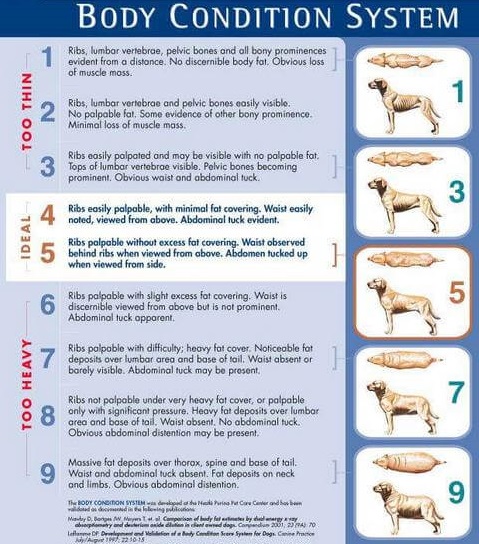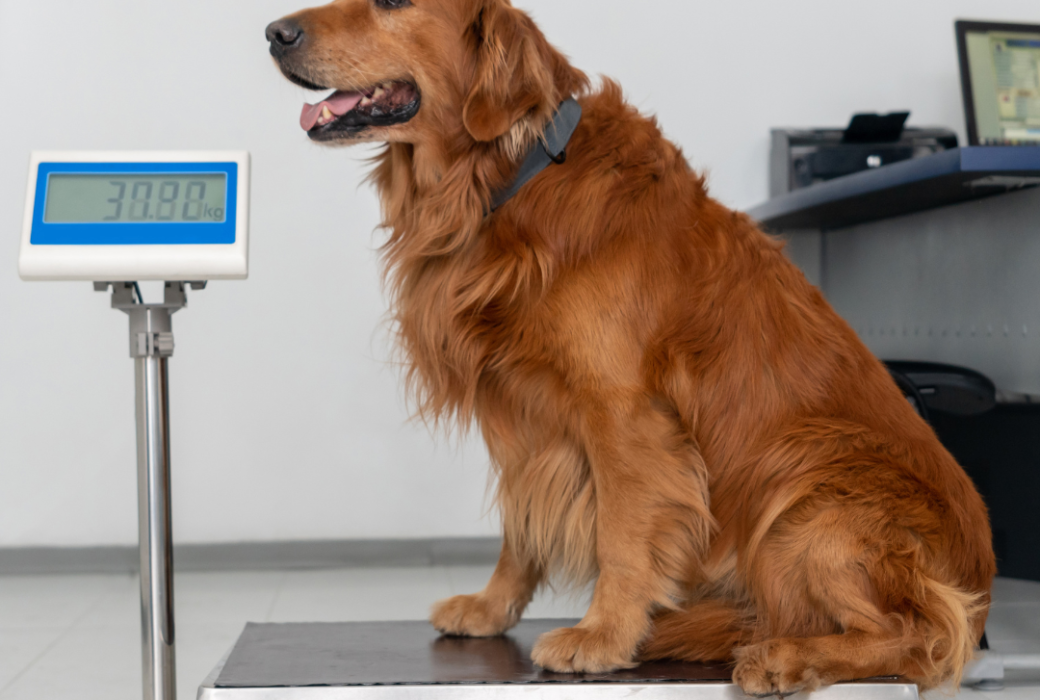As a pet owner, it’s important to ensure that your dog maintains a healthy weight. Being overweight can lead to a range of health problems, including joint issues, diabetes, and heart disease. So how do you know if your dog is at a healthy weight?
The first step is to consult with your vet. Your veterinarian can assess your dog’s overall health and give you an idea of what a healthy weight range is for your particular breed. This will help you set a realistic goal for your dog’s weight. Once you have an idea of what your dog’s healthy weight range is, you can begin to monitor their weight at home. But what about dogs with mix breeds?
Here’s a solution that works for all dogs.
The best way to determine your dog’s ideal weight is to use the same method used by vets, The Body Condition System (BCS)

The Body Condition System uses visual inspection and your sense of touch to rate the state of your dog:
- Ribs
- Waistline
- Tummy
By using your senses of sight and touch, you assign your dog to one of three categories:
- Too Thin (Body Condition Score = 1 to 3)
- Ideal (Body Condition Score = 4 to 5)
- Too Heavy (Body Condition Score = 6 to 9)
Your dog’s BCS score will be based on comparing her appearance to the above diagram, and by palpating (feeling) the ribs and frame. Once your pet reaches a body condition score of 4 to 5 on a 9-point scale be sure to weigh her. You’ve now determined your dog’s ideal weight.
Another way to monitor your dog’s weight is to pay attention to their behavior and energy levels. If your dog is sluggish or seems to be having trouble getting around, they may be overweight. On the other hand, if your dog is hyperactive or restless, they may be underweight.
In addition to monitoring your dog’s weight, you can also help them maintain a healthy weight by providing them with a balanced diet and regular exercise. They can also help you determine how much food your dog should be eating each day.
When it comes to exercise, your dog should be getting at least 30 minutes of moderate exercise each day. This can include walks, runs, or playing fetch in the yard. Regular exercise not only helps your dog maintain a healthy weight, but it also provides mental stimulation and promotes overall well-being.
Maintaining a healthy weight is crucial for your dog’s health and well-being. By working with your veterinarian and monitoring your dog’s weight at home, you can help ensure that your dog stays healthy and happy for years to come.

